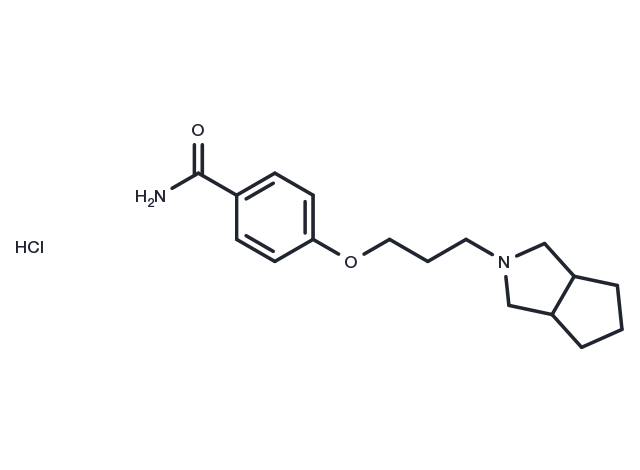Powder: -20°C for 3 years | In solvent: -80°C for 1 year


S 38093 is a novel brain-penetrant antagonist/inverse agonist of H3 receptors.

| Pack Size | Availability | Price/USD | Quantity |
|---|---|---|---|
| 1 mg | In stock | $ 79.00 | |
| 5 mg | In stock | $ 165.00 | |
| 10 mg | In stock | $ 235.00 | |
| 25 mg | In stock | $ 419.00 | |
| 50 mg | In stock | $ 598.00 | |
| 100 mg | In stock | $ 853.00 | |
| 1 mL * 10 mM (in DMSO) | In stock | $ 168.00 |


| Description | S 38093 is a novel brain-penetrant antagonist/inverse agonist of H3 receptors. |
| Kinase Assay | PI3K inhibition by LY294002 is determined in a radiometric assay using purified, recombinant enzymes with 1 μM ATP. The kinase reaction is carried out for 1 hour at room temperature (24oC) and is terminated by addition of PBS. IC50 values are subsequently determined using a sigmoidal dose-response curve fit (variable slope). CK2 and GSK3β (glycogen synthase kinase 3β) inhibition are established by kinase selectivity screening. LY294002 is tested against the Upstate panel of kinases in 10 μM ATP.[4] |
| Molecular Weight | 324.85 |
| Formula | C17H25ClN2O2 |
| CAS No. | 1222097-72-4 |
Powder: -20°C for 3 years | In solvent: -80°C for 1 year
DMSO: 25 mg/mL (76.96 mM)
You can also refer to dose conversion for different animals. More
bottom
Please see Inhibitor Handling Instructions for more frequently ask questions. Topics include: how to prepare stock solutions, how to store products, and cautions on cell-based assays & animal experiments, etc.
S 38093 HCl 1222097-72-4 GPCR/G Protein Immunology/Inflammation Neuroscience Histamine Receptor inhibitor inhibit
